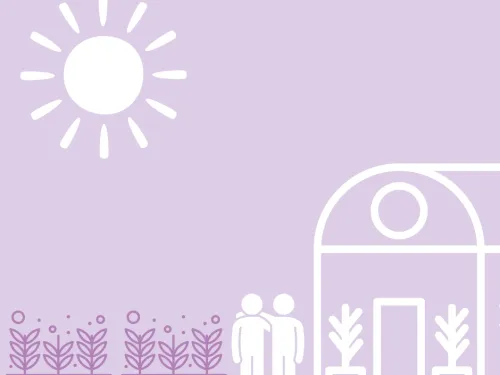
Sustainable food growing
On this page you'll find useful tips on how to grow food in ways that help your community and the biodiversity around it

Solitary bees are important pollinators and a gardener’s friend. Help them by building a bee hotel for your home or garden and watch them buzz happily about their business.
Unlike the familiar bumblebee and honeybee, most of our bees do not make colonies but are actually solitary. The female spends most of her life searching for suitable nesting sites. Some species will nest in holes in the ground, while others will look for old beetle holes or hollow stems in which to lay their eggs. If you can provide a suitable home, these bees will come to you.
If you can make a bee hotel, the female mason bee will come to you!
Hang your hotel on a sunny wall, sheltered from rain. Remember to clean your hotel once a year to remove any build-up of fungi, debris and parasites.
Watch as solitary bees investigate your finished bee hotel in the spring. With any luck, the females will lay their eggs inside the stems of your hotel. Each egg is left with a store of pollen for the grub to eat when it hatches. The egg is sealed up behind a plug of mud, in a ‘cell’, and one stem may end up with several ‘cells’ in it. The young bees will emerge the following year.


On this page you'll find useful tips on how to grow food in ways that help your community and the biodiversity around it

In this page you'll find an array of information to how to best help wildlife over the changing seasons each year

On this page you'll find exciting information on getting involved with citizen science project in your own home and community

On this page you'll find useful information on how to take environmental action from home and in your community

On this page you'll find useful information on how to reach out to others about nature & the environment

On this page you'll find excellent tips on how to shop sustainably and be mindful of what you're eating